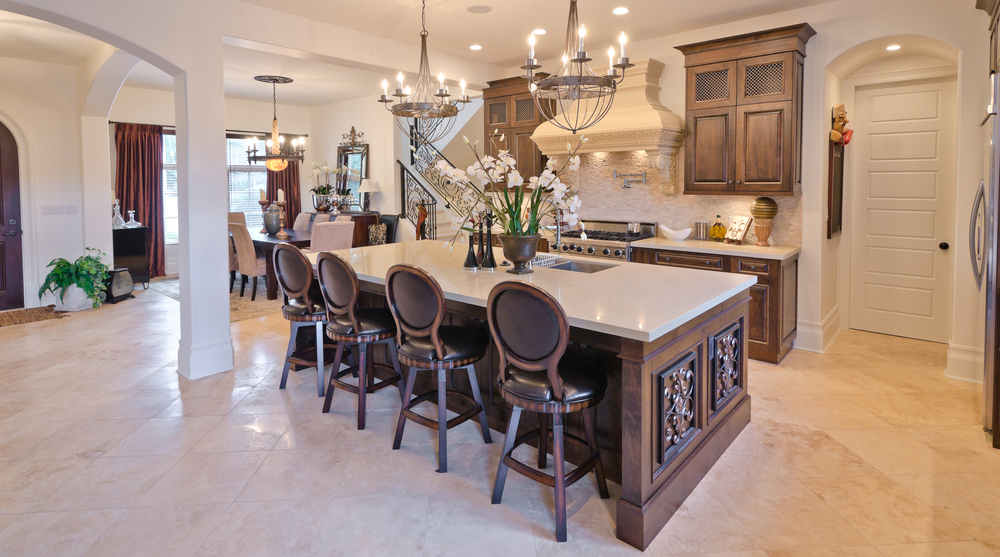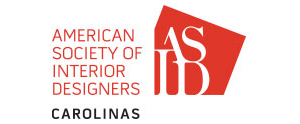
Why Hire a Professional Designer
In addition to their in-depth knowledge of products, materials and finishes, professional designers have the training and expertise to plan, schedule, execute and manage your project from start to finish. They know and work closely with many vendors, contractors and other service providers, coordinating and orchestrating the entire design team. Designers also provide specification and purchasing services to procure materials, furniture, accessories and art, some of which you might not be able to find on your own.
When you hire an interior designer, you get the benefit of an experienced professional who can solve problems, help you avoid costly mistakes and, most importantly, create an attractive, affordable space designed specifically to meet your lifestyle needs.
Why Hire an ASID Designer
To qualify as an ASID designer, an individual must fit one of the following three criteria:
(1) Professional ASID Member
- Must have passed the two-day accreditation examination administered by the National Council for Interior Design Qualification (NCIDQ). This exam requires an 8 hour practicum portion as well as two multiple choice portions, which cover the following topics:
-
-
-
-
- Building Systems
- Codes
- Construction Standards
- Contract Administration
- Design Application
- Professional Practice
- Project Coordination
-
-
-
- The purpose of this exam is to certify that these designers have been educated, trained and examined to protect public health, safety and welfare.
- These designers are also held to the strict ASID Code of Ethics and Professional Conduct
(2) Allied ASID Member
- Must have graduated from an accredited college program with a four year degree in interior design
- Held to the strict ASID Code of Ethics and Professional Conduct
(3) Associate ASID Member
- Must have at least six years of full-time interior design work experience
- Must have graduated from an accredited program with at least a two-year degree
- Held to the strict ASID Code of Ethics and Professional Conduct
Selecting a Designer
When you’re ready to select a designer to work with on your project, the number of individuals and firms to choose from can be daunting. How do you know if you’ve chosen a professional designer? In general, you want a designer with the following characteristics:
- Is accredited as an interior designer
- Has experience in the type of project you are doing
- Has demonstrated creativity, talent and resourcefulness
- Is attentive, responsive and communicates well
- Has a record of reliability and good work habits.
One way to ensure you are working with a professional interior designer is if he or she is a member of the American Society of Interior Designers. The ASID appellation after a designer’s name indicates that he or she is an accredited designer who has passed rigorous professional scrutiny and testing.
The Difference Between a Designer and a Decorator
(text credit: The NCIDQ Website)
Many people use the terms "interior design" and "interior decorating" interchangeably, but these professions differ in critical ways.
Interior design is the art and science of understanding people's behavior to create functional spaces within a building. Decoration is the furnishing or adorning of a space with fashionable or beautiful things. In short, interior designers may decorate, but decorators do not design.
Interior designers apply creative and technical solutions within a structure that are functional, attractive and beneficial to the occupants' quality of life and culture. Designs respond to and coordinate with the building shell and acknowledge the physical location and social context of the project. Designs must adhere to code and regulatory requirements and encourage the principles of environmental sustainability.
The interior design process follows a systematic and coordinated methodology -- including research, analysis and integration of knowledge into the creative process — to satisfy the client’s needs and resources.
U.S. states and Canadian provinces have passed laws requiring interior designers to be licensed or registered and to document their formal education and training. Many states and provinces also specifically require all practicing interior designers to earn the NCIDQ Certification to demonstrate their experience and qualifications. By contrast, interior decorators require no formal training or licensure.
Costs and Fees
Designers, like other professionals, are different from one another in their combinations of talents, skills, knowledge, experience, personalities, specialty areas and reputations. What and how they charge will vary accordingly.
There is no such thing as a “typical” or “customary” fee for an interior designer. Many factors, including those mentioned above, influence what a designer may charge for his or her services. Most residential designers and many commercial designers use one of the following methods, or combine methods, to set their fees and may negotiate to suit a client’s particular needs:
- Fixed fee (or flat fee)
- The designer identifies a specific sum to cover costs, exclusive of reimbursement for expenses. One total fee applies to the complete range of services, from conceptual development through layouts, specifications and final installation.
- Hourly fee
- Compensation is based on actual time expended by the designer on a project or specific service.
- Cost plus
- A designer purchases materials, furnishings and services (e.g., carpentry, drapery workrooms, picture framing, etc.) at cost and sells to the client at the designer’s cost plus a specified percentage agreed to with the client to compensate for the designer’s time and effort.
- For larger commercial projects, costs may be calculated on a per square foot basis, based on the area of the project.
In addition to the fee structures outlined above, designers may require a retainer before beginning a design project. A retainer is an amount of money paid by the client to the designer and applied to the balance due at the termination of the project. The retainer is customarily paid upon signing the contractual agreement in advance of design services.
At one time, cost plus was the most widely used fee structure for residential designers. It is becoming more common now for designers to charge an hourly rate for design services and cost plus for products and services the designer is asked to purchase or a fixed fee for the entire project.
In addition to the designer’s fees, there are other costs to consider. Only you can decide what a reasonable budget for your project is. If you have concerns about price, discuss them with the designer. Don’t be shy about asking the designer to help you optimize your budget. But be realistic, too. You may need to scale back your project or consider having the work done in stages. If you are concerned about the quoted cost of furniture or furnishings, ask the designer to provide you with a list of options.
A final word about cost: How you choose to furnish your interior and how you work with your designer will have tremendous impact on the final cost of the project. Items such as antiques or custom-made furniture, and modifications that involve altering or moving load-bearing walls or beams will significantly increase the cost of your project, as will requesting changes mid-project or making excessive demands on the designer’s time. The more research and planning you do before you start, the more you will be able to help keep costs down during the project.
Interior Design Basics
Interior design concerns itself with more than just the visual or ambient enhancement of an interior space, it seeks to optimize and harmonize the uses to which the interior environment will be put.
Many factors come into play in formulating the design solution. There is the space itself–its dimensions and construction–with its potential and its limitations. There is how the space will be used–for work or leisure, entertainment or worship, healing or learning. There is the meaning of the space, what it signifies–be it power, authority, security, wisdom, achievement, playfulness or serenity. There are practical considerations, like ease of access, amount of light, acoustics, seating and places to store or set things down. There are health and safety considerations, attention to special needs and more.
For more information, see the definition of interior design developed by the National Council for Interior Design Qualification.
Design Specialties
Designers often specialize in one or more specific types of interior design. Some designers specialize in only residential or commercial (or, contract) projects, but many designers do both residential and commercial projects of various kinds.
Approaches
Conversely, many designers approach projects from different perspectives. These approaches to design cut across specialties.
[upd. 9-2-15]


